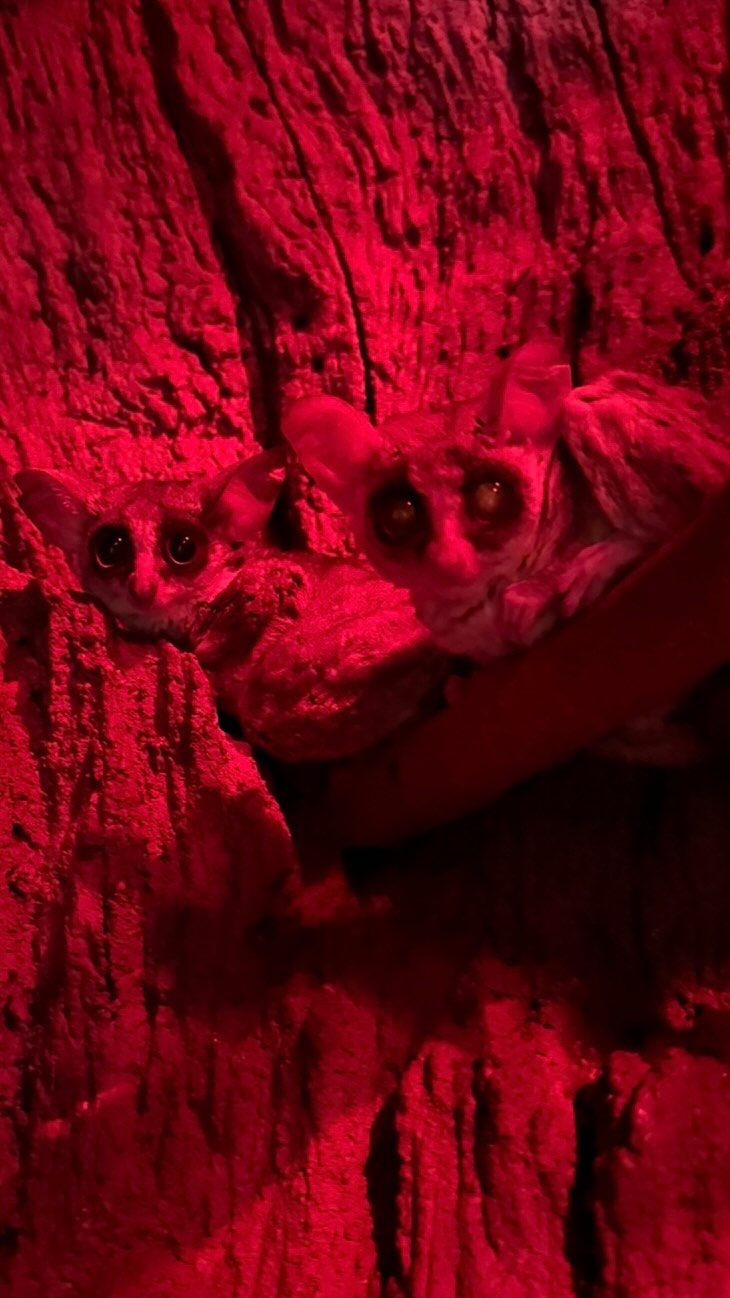- Introduction to Mopani, the male bushbaby, and his arrival at the zoo.
- Characteristics and behavior of bushbabies with a focus on Mopani.
- Enrichment and conservation efforts for bushbabies.
- Mopani’s interaction with his environment and Hilda, the female bushbaby.
- The importance of zoos in wildlife conservation and education.
Mopani, a male bushbaby, has recently become part of our zoo family, arriving from the National Zoo and settling in beautifully. This little primate, small yet full of personality, instantly captivates visitors and staff alike. Bushbabies, also known as galagos, belong to the family Galagidae and are native to Africa. With Mopani joining the zoo, it presents a unique opportunity to explore more about these fascinating creatures.
Bushbabies are nocturnal, meaning they are most active at night. Their large eyes and acute hearing aid in navigating the darkness as they leap from branch to branch. Mopani exemplifies these traits, often spotted engaging in his night-time antics around the habitat. Observing his behavior provides a window into the adaptive strategies of these remarkable animals.
While Mopani is settling in, he has been seen bonding with our female bushbaby, Hilda. These interactions are crucial for social enrichment. By observing their behaviors, zookeepers can learn about bushbaby social structures and communication. Enrichment activities, such as introducing varied food sources and stimulating toys, help keep them active and curious. Mopani’s favorites include bugs offered by keepers and exploring new physical structures.
Bushbabies play a role in conservation efforts. As habitats decline due to deforestation, zoos offer a safe haven and contribute to breeding programs. Understanding bushbabies’ needs in captivity aids in fostering healthy and thriving populations. Zoos also educate the public about the importance of species conservation, highlighting threats faced in the wild and promoting sustainable practices.
Mopani and Hilda’s habitat has been thoughtfully designed to replicate their natural environment. By providing climbing structures and spaces to hide, their enclosure encourages natural behaviors. Regular assessments ensure the bushbabies are thriving, and adjustments are made based on their needs and preferences.
Hosting animals like Mopani showcases the role of zoos in wildlife conservation. Beyond being attractions, zoos serve as centers for research, education, and the preservation of species. They engage communities in understanding and caring for wildlife, enhancing awareness about ecological impacts. Mopani’s presence, though localized, sparks curiosity and learning, fueling a broader conversation on conservation.
Mopani, alongside Hilda, brings life to the zoo’s Africa wing. His journey from the National Zoo to his current home is a testament to collaborative efforts in animal stewardship. By visiting him, zoo-goers connect intimately with this species, gaining appreciation and insight into their vibrant world. This connection fulfills the zoo’s mission of fostering a strong human-wildlife bond, promoting a legacy of conservation for future generations.
*****
Source Description
We’re excited to welcome Mopani, a male bushbaby, to our zoo family! Mopani joins us from the National Zoo and has been settling in wonderfully since his arrival last month.
Though small in stature, Mopani is full of personality. You might not spot this little primate at first glance — but take a moment, look closely, and you just might catch him cuddling with our female Hilda, exploring enrichment, or even accepting bugs from his keepers. Once you see him, we promise you’ll fall in love, too.
Come say hello to Mopani in our Africa wing and see how this sweet little duo is settling into their cozy, enriched habitat!


